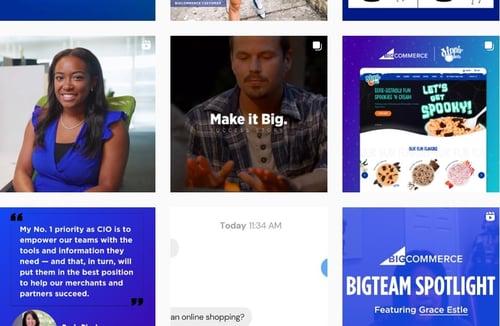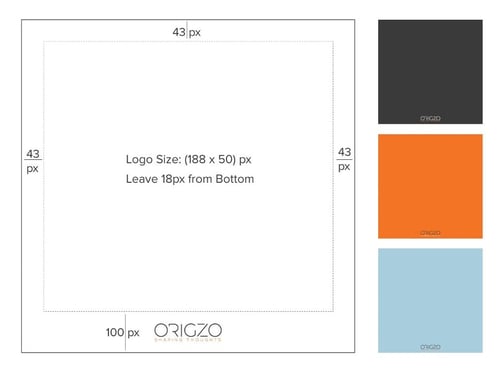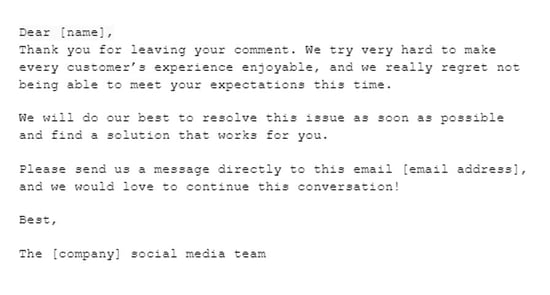How to Create a Social Media Style Guide for Your Brand
Written by
It's nearly 2023. If your company still isn't using social media to its full advantage, you’re missing out — not only on participating in the conversations around your brand, but on potential lead generation and building stronger relationships with your customers. It’s a must-have and potent marketing strategy and tool for any business.
But you can’t simply use social media haphazardly; you need to have a social media style guide in place to ensure everyone on your team can accurately convey the brand’s value proposition in their posts and interactions on behalf of your company. Social media brand guidelines keep your voice consistently aligned with your brand goals, and ensure that your social posts resonate with the right audience.
Don’t have a social media style guide yet? Here are three tips you should follow while developing one:
- Define Your Brand Voice
- Formulate Visual Guidelines
- Determine Social Media Responses
Let's dig into each of these crucial elements — and be on the lookout for a few social media style guide examples, too.
1. Define Your Brand Voice
One of the first steps to take in developing your social media marketing strategy is to define your brand’s voice. A brand voice essentially humanizes your brand and makes it easy for you to have natural and productive conversations with your audience.
Your brand voice and tone must align with your brand’s personality and be distinct and consistent. Your customers and target audience should always recognize your brand voice when they come across any of your social media posts.
Defining your brand voice doesn’t have to be hard — allow yourself to be guided by your company’s mission and vision. Also consider your buyer personas and what they’re expecting to gain from interactions with your company, too.
If you’re looking to use social media for recruitment marketing and your primary targets are millennials or Gen Z, for example, then it would make sense for your brand voice to be quirky/edgy and fun – without being condescending or “cutesy.” Get the language right in your posts and your messages will resonate with the audience.
Here’s an example from one company that’s nailing it. Buffer, which is a social media marketing tool that primarily caters to young professionals, frequently posts with a tone that shows they’re having fun and are very relatable to their specific audience. Take a look at their use of emojis:

Clarity and consistency of voice are important. You should come up with more than one adjective to describe your brand voice, but all of them should complement one another – you don’t want to create a confusing brand voice because that translates to a confusing brand personality. You can have a brand voice that’s both “funny” and “relatable” because the adjectives complement each other, but you’d probably struggle with a brand voice that’s “funny” and “formal.”
2. Formulate Visual Guidelines
Now that you have your brand voice, it’s time to formulate your visual guidelines. Your visual guidelines should identify the types of visual elements your social media team can use when creating social content.
The visual guidelines should, of course, be based on your brand voice and adhere to any applicable regulations and other standards. If you decide your brand voice is fun and quirky, then your visual guidelines might encourage the use of dramatic colors and shapes, both of which suggest energy and excitement.
You should base your visual guidelines on your brand values, too. For example, the B2B eCommerce brand BigCommerce uses a shade of blue in all their posts on Instagram. Blue is known to symbolize stability and reliability, which is in line with the brand’s ideals for business growth.

Aside from color themes, your visual guidelines should include details on how to incorporate photos, GIFs, and other graphics. Specify the dimensions of your logo, too, as in the example below:
You can also outline your preferred style of formatting for social media. If you’re posting testimonials, for instance, will you include the satisfied client’s quote first and the client’s name and position below the quote, or will it be the other way around? The more specific your visual guidelines, the better.
RELATED: 15 Social Media Visibility Tips to Boost Your Profile
3. Determine Social Media Responses
How will you respond to customers and prospects who reach out or engage with your company posts? Detail those scenarios and suggestions in your social media style guide. If you don’t give social media specialists those pointers, they might end up responding with a message that runs counter to your brand values.
There are two ways to approach this, and I recommend using both so you can cover all your bases.
The first approach is to give your team general pointers. The second approach involves you providing hypothetical scenarios and specifying the ways your team should respond given those scenarios.
Giving your team pointers is fairly easy to do: Just put yourself in your customer’s or prospect’s shoes and think of ways you’d like to be treated by a brand representative. Then, put those in writing.
You may ultimately come up with the following general instructions for your social media responses:
- be polite
- don’t lash out
- use positive words
The second approach requires a bit more work. You’ll have to meet with your customer service and social media teams to identify as many hypothetical (or real) social media customer complaints and challenges as possible. For each scenario, you’ll then have to create predetermined on-brand replies or templates.
One such scenario might involve a customer posting a complaint on a social media channel. So, you could come up with a sample response template like the one below:
Try to identify as many scenarios with your teams as possible. The more set responses you identify, the more you can be assured every member of your team will act properly in accordance with your brand values.
One additional note: Bear in mind that your job doesn’t end after you finish writing your situational response playbook. You still need to monitor how this is applied in real life and make tweaks depending on customer feedback. Update your situational response playbook as situations arise.
Boost Your Social Media Strategy Today
A social media style guide helps your social team achieve brand consistency across all your social channels. You need it to ensure your brand is easily recognizable and you’re adhering to best practices when people find and interact with you on social media.
To recap:
- Find your brand voice
- Create visual guidelines that take your brand voice into account
- Instruct your team on how they should respond to customers on social channels
If you’re looking for even more social media guidance, click the link below for Weidert Group’s huge curation of social media resources to help you along the way. Best of luck!
Subscribe To Our Blog
Information. Insights. Ideas. Get notified every time a new Weidert Group blog article is published – subscribe now!
You May Also Like...

Artificial Intelligence
Revenue-Driving B2B Content Marketing Strategy with Andy Crestodina

Artificial Intelligence
AI Agents Are Here—How Smart Businesses Are Using Them Now

Inbound Marketing
Podcasting Playbook: What We Learned After 100 Days of Running a B2B Podcast
Accelerate Your Growth with
Weidert Group
If you’re ready to explore a partnership, request a personalized consultation with our team.



